Automatic Plant Disease Detection Based on Tranvolution Detection Network With GAN Modules Using Leaf Images
- PMID: 35693164
- PMCID: PMC9178295
- DOI: 10.3389/fpls.2022.875693
Automatic Plant Disease Detection Based on Tranvolution Detection Network With GAN Modules Using Leaf Images
Abstract
The detection of plant disease is of vital importance in practical agricultural production. It scrutinizes the plant's growth and health condition and guarantees the regular operation and harvest of the agricultural planting to proceed successfully. In recent decades, the maturation of computer vision technology has provided more possibilities for implementing plant disease detection. Nonetheless, detecting plant diseases is typically hindered by factors such as variations in the illuminance and weather when capturing images and the number of leaves or organs containing diseases in one image. Meanwhile, traditional deep learning-based algorithms attain multiple deficiencies in the area of this research: (1) Training models necessitate a significant investment in hardware and a large amount of data. (2) Due to their slow inference speed, models are tough to acclimate to practical production. (3) Models are unable to generalize well enough. Provided these impediments, this study suggested a Tranvolution detection network with GAN modules for plant disease detection. Foremost, a generative model was added ahead of the backbone, and GAN models were added to the attention extraction module to construct GAN modules. Afterward, the Transformer was modified and incorporated with the CNN, and then we suggested the Tranvolution architecture. Eventually, we validated the performance of different generative models' combinations. Experimental outcomes demonstrated that the proposed method satisfyingly achieved 51.7% (Precision), 48.1% (Recall), and 50.3% (mAP), respectively. Furthermore, the SAGAN model was the best in the attention extraction module, while WGAN performed best in image augmentation. Additionally, we deployed the proposed model on Hbird E203 and devised an intelligent agricultural robot to put the model into practical agricultural use.
Keywords: Generative Adversarial Networks; deep learning; detection network; leaf images; plant disease detection; transformer.
Copyright © 2022 Zhang, Wa, Zhang and Lv.
Conflict of interest statement
The authors declare that the research was conducted in the absence of any commercial or financial relationships that could be construed as a potential conflict of interest.
Figures
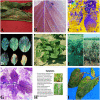




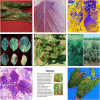
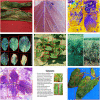
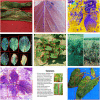
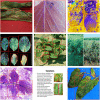
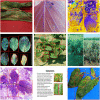


References
-
- Agarwal M., Singh A., Arjaria S., Sinha A., Gupta S. (2020). Toled: tomato leaf disease detection using convolution neural network. Proc. Comput. Sci. 167, 293–301. 10.1016/j.procs.2020.03.225 - DOI
-
- DeVries T., Taylor G. W. (2017). Improved regularization of convolutional neural networks with cutout. arXiv preprint arXiv:1708.04552. 10.48550/arXiv.1708.04552 - DOI
LinkOut - more resources
Full Text Sources

